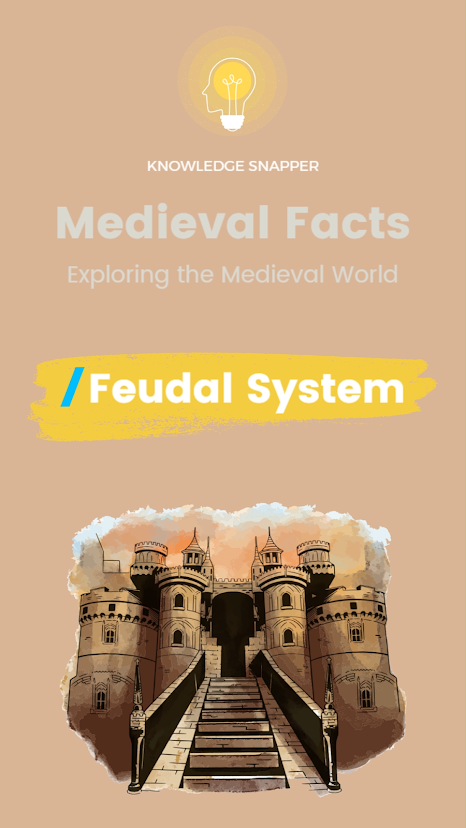Exploring the Feudal System: 5 Fascinating Facts
Ever wondered how a medieval knight was connected to a humble farmer in the tangled web of the feudal system? Here are five facts that will unravel the complexities of this fascinating social structure.
Fact Number One: The Pyramid Hierarchy
The feudal system was built on a pyramid-like hierarchy, creating a structured society where everyone had a specific role:
King: At the very top sat the king. He held the ultimate authority and owned all the land within the kingdom. The king's power was immense, as he could distribute land to his loyal followers and demand their service in return.
Powerful Lords: Just below the king were the powerful lords, who played a crucial role in maintaining the king’s domain. They were granted large plots of land, known as fiefs, by the king. In exchange for this land, lords pledged their unwavering loyalty and provided military support whenever the king needed it.
Lesser Vassals: Below the powerful lords were the lesser vassals. These individuals received smaller pieces of land from the more powerful lords, and they, too, were bound by duty. The lesser vassals' main responsibility was to provide service to their lord, which often included military aid and other forms of obedience.
Peasants and Serfs: At the bottom of the hierarchy were the peasants and serfs. They were the backbone of the medieval economy, working the land to produce food for everyone in the hierarchy above them. Unlike modern farmers, these individuals were not free and were tied to the land they worked on, providing labor and produce to the lords.
Fact Number Two: Land for Loyalty
Lords granted land, known as fiefs, to vassals in exchange for military service and unwavering loyalty. This relationship was the essence of the feudal bond. Vassals, who often included knights, were obligated to serve their lords in various capacities. They provided military support, counsel, and even financial aid in certain situations. The land they received was more than just a reward; it was a source of income and power.
Fact Number Three: Life of the Peasants
Peasants who worked the land were not exactly free. They lived under the lord's protection but had many obligations. Peasants had to provide a portion of their produce or labor to their lord. This exchange meant that, although they received protection and a place to live, their personal freedoms were severely restricted.
"Peasants had to give a part of their harvest or perform labor for the lords, making them bound to the estate."
This system created a dependency where peasants relied heavily on their lord for security, which came at the cost of being tied to the land and subject to the lord’s demands.
Fact Number Four: Diverse Implementation Across Europe
The feudal system was not a one-size-fits-all model; it varied significantly across Europe. Different regions had their own unique forms of serfdom and obligations. In some areas, serfs enjoyed relatively more freedoms, such as the ability to own property or move from one place to another. Conversely, in more stringent regions, serfs faced tighter control and fewer rights, with their lives being closely regulated by their lords.
In regions with more lenient systems, serfs could potentially engage in trade, save money, and eventually change their social status, whereas in harsher climates, such mobility was virtually impossible.
Fact Number Five: Climbing the Social Ladder
Despite their low status, some serfs could eventually buy their freedom or rise to prominence through various means. Access to education, the acquisition of wealth, or exceptional skills could enable a serf to gain a better position in society.
The feudal system might seem rigid, but it did offer some limited opportunities for social mobility. A serf who managed to accumulate enough resources or favor could potentially improve their standing, an aspect that added a dynamic quality to the seemingly static hierarchy.
The Dynamic Nature of the Feudal System
The feudal system was a complex and dynamic arrangement, reflecting both power and dependency. It wasn’t a static hierarchy, and there was room for social mobility, albeit limited and challenging. The web of relationships and duties was intricate, with each level of society interconnected, creating a structure that was both rigid in its hierarchy and flexible in its possibilities for movement.
Conclusion
The feudal system, with its intricate web of relationships and duties, provides a fascinating glimpse into medieval life. From the powerful kings and lords to the humble peasants and serfs, each level of society was interconnected, creating a structure that was both rigid and flexible.
Come back tomorrow for another intriguing piece of knowledge that will expand your understanding of the world.


.jpg)
Comments
Post a Comment